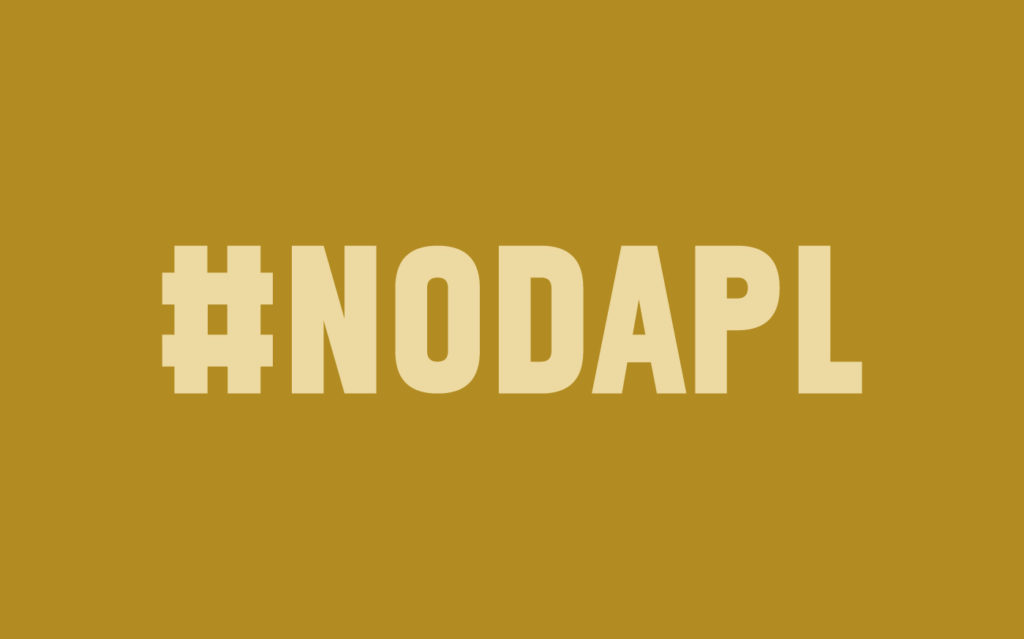
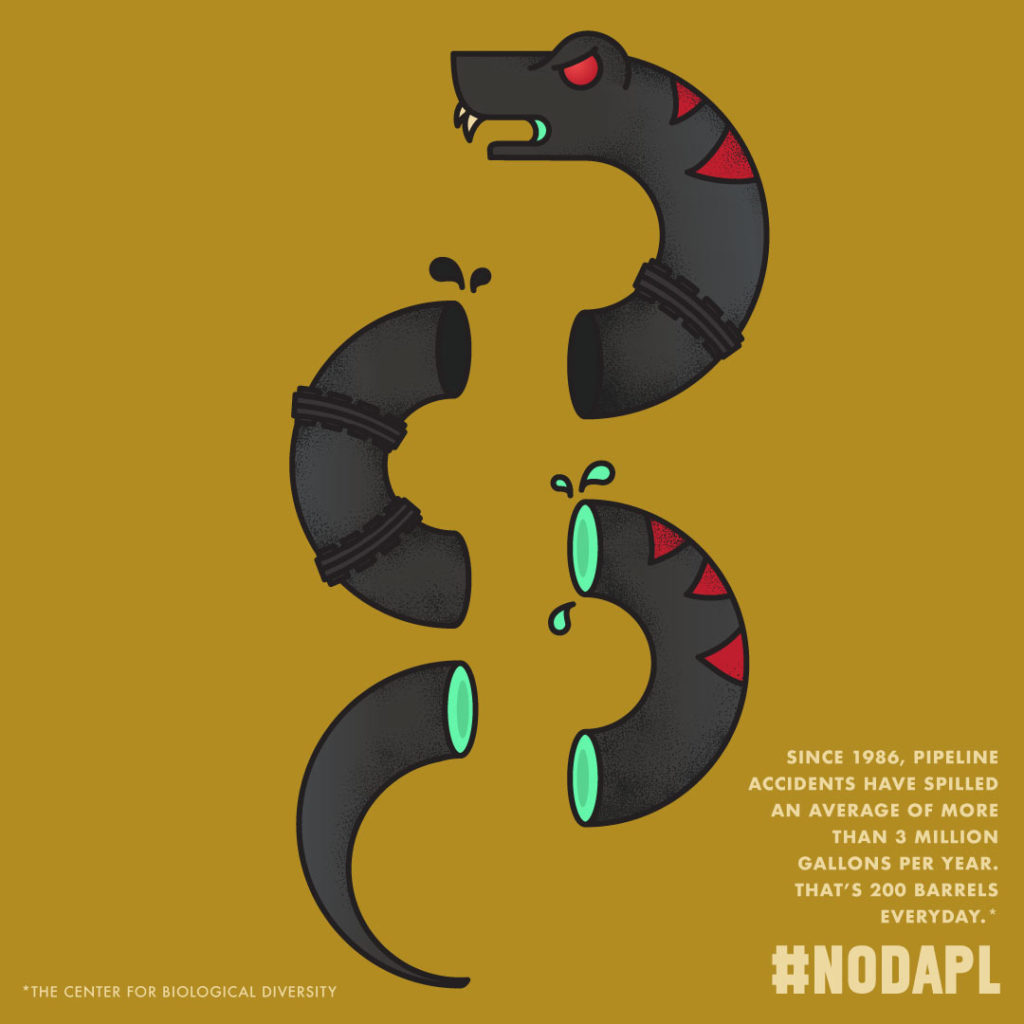
Myth #1: Oil pipelines are safe and dependable.
I wanted to address the defense of oil pipelines as being safe and necessary. I did some research and found the Center for Biological Diversity’s study of oil pipeline spills for the last 30 years. They concluded that “since 1986 there have been nearly 8,000 incidents, resulting in more than 500 deaths, more than 2,300 injuries, and nearly $7 billion in damage.” Calling upon imagery of the Don’t Tread on Me flag, I wanted people to see how free markets can upend our natural resources. I used bright, neon blues and dark grays to sharply contrast life and death.
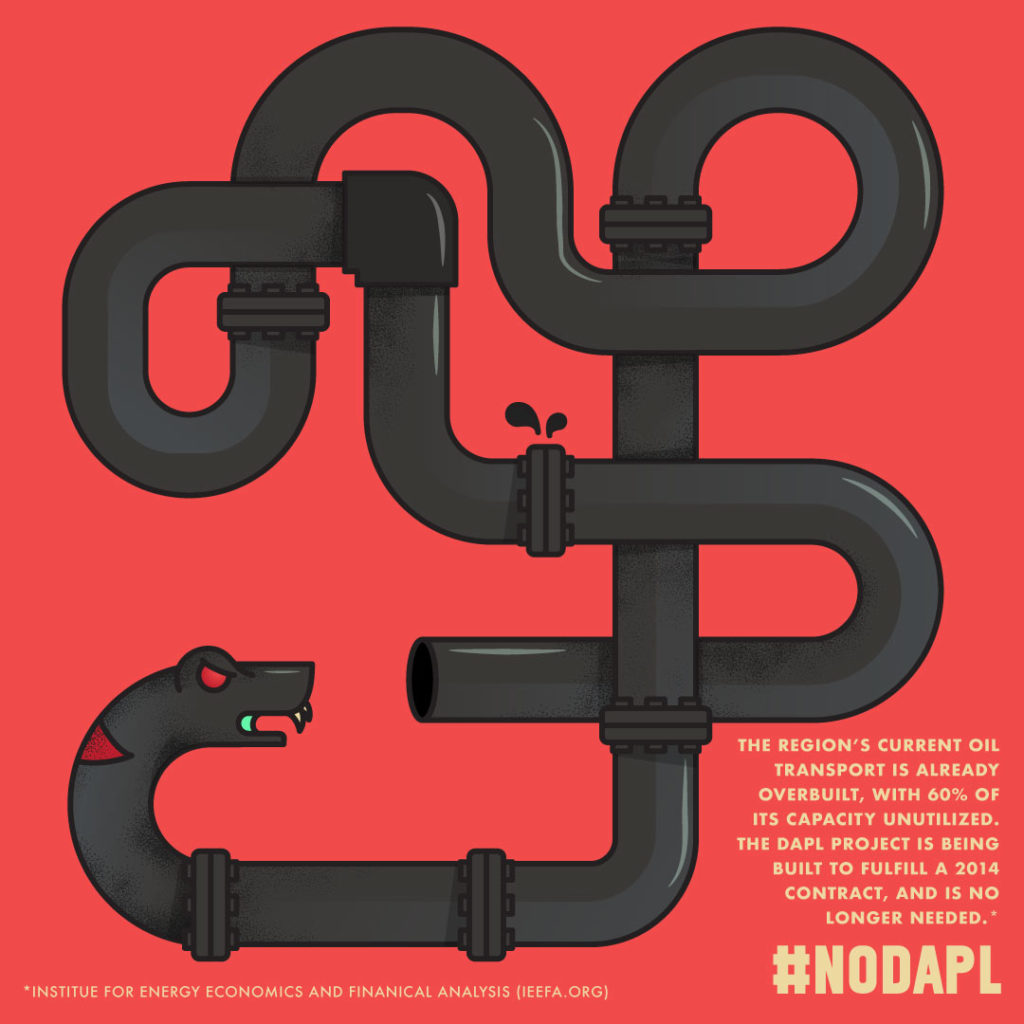
Myth #2: The pipeline ensures domestic energy independence.
I also wanted to address the Dakota Access Pipeline from a purely economic point of view. In November of that year, the Institute for Energy Economics and Financial Analysis published a report addressing the overbuilding of oil infrastructure in the region, citing favorable contract terms instead of economic prosperity as the real motivation to build. I wanted to highlight the inefficiencies and sheer absurdity of the claimed pipeline’s benefit to the country, so I created a nonsensical twisting of pipe fittings disguised as the black snake.
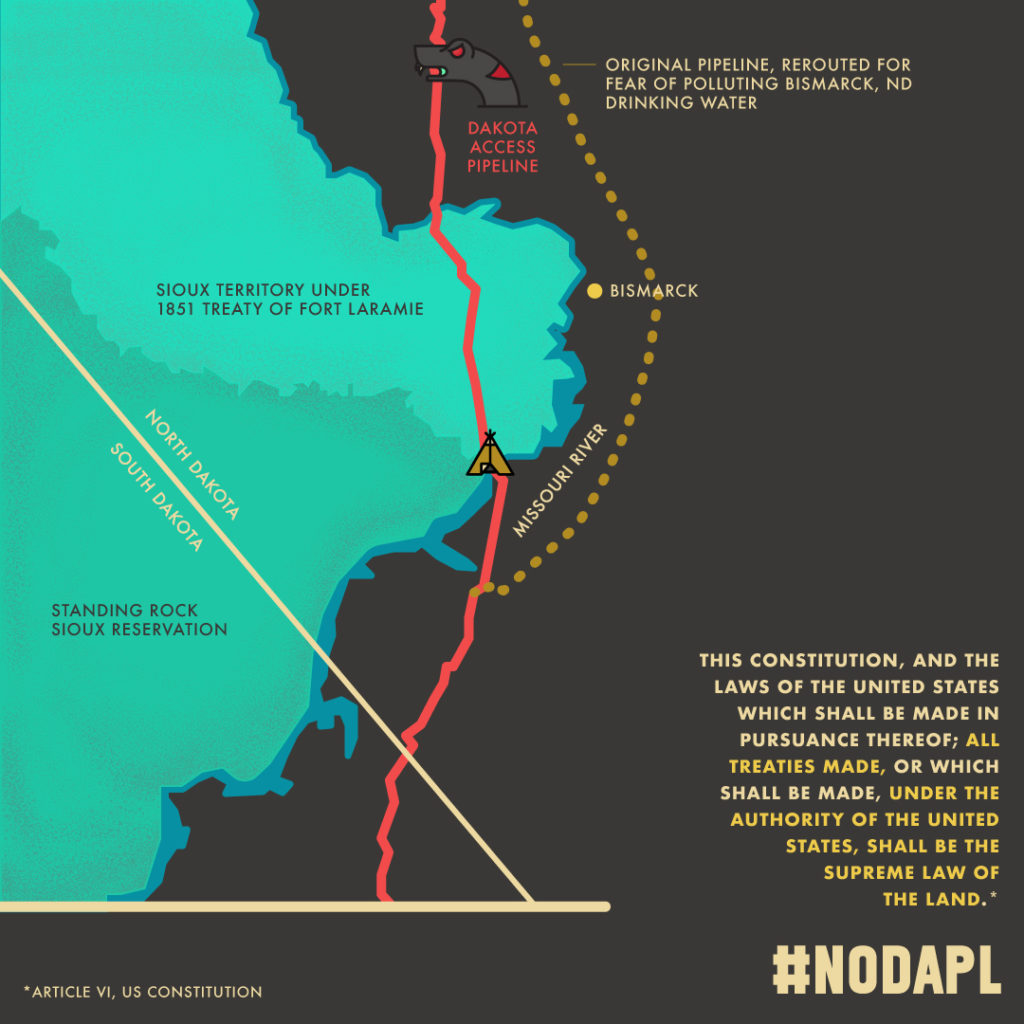
Myth #3: The land is privately owned, and therefore they have the right to remove trespassers.
Even from a sovereignty stance, it was hard to justify the brutal tactics to remove #NODAPL protestors. Private security officials, and eventually the Morton County sheriff’s department used water cannons, pepper spray, and even dogs to threaten and hurt protestors on the proposed pipeline construction site. I wanted to find out the history of land ownership in the area, and found a great map by Carl Sack, showing the land promised to the Sioux since 1851. What’s worse is that the pipeline was moved to cut through Sioux territory in order to avoid potential oil spills in the big city of Bismarck. For staunch constitutionalists, this was a clear violation of sovereignty.
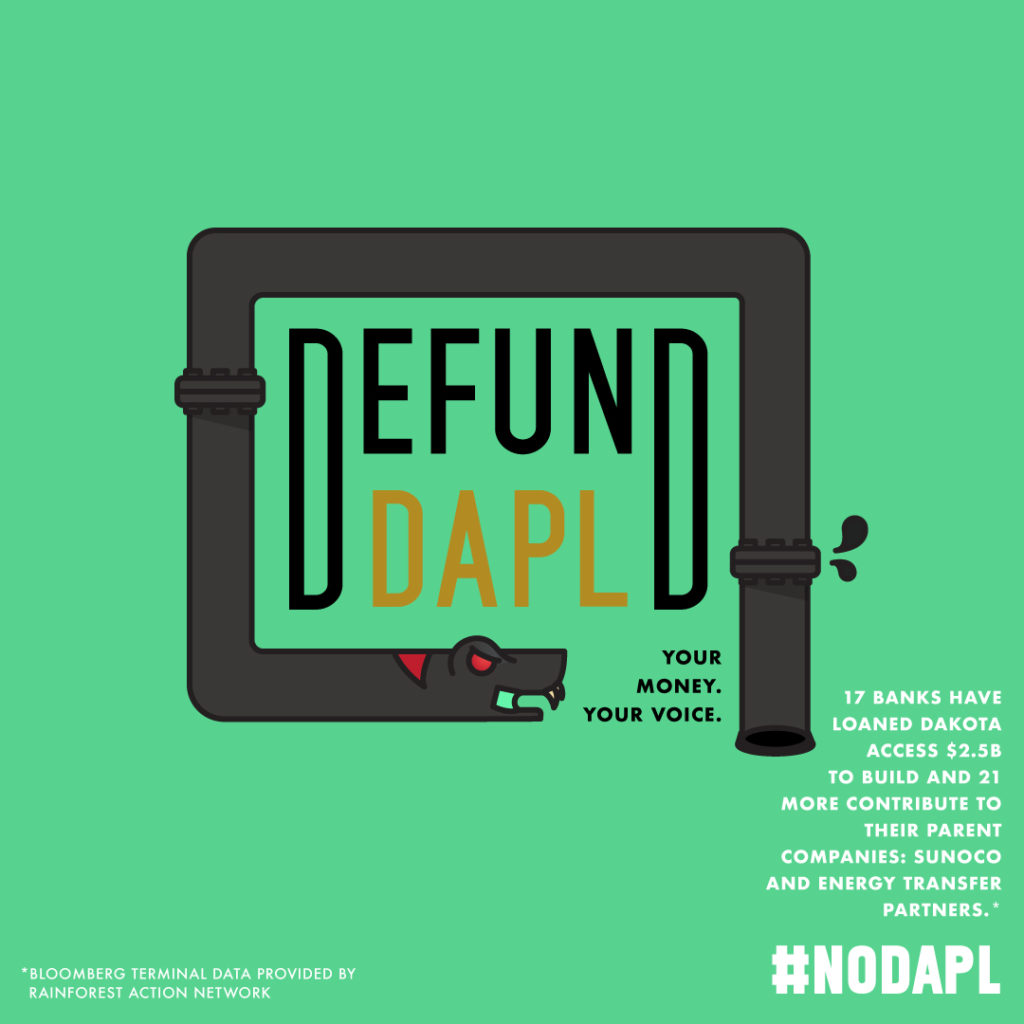
Myth #4: There’s nothing I can do about it.
When it wasn’t possible to travel to North Dakota, the prospects for helping seemed minute and meaningless. A few friends and I pulled our money together to buy supplies for the Oceti Sakowin camp, but it just seemed like a drop in the bucket compared to the well-funded oil companies they were up against. I learned that local and national banks had substantial investments in Energy Transfer Partners, the company behind the Dakota Access Pipeline. These banks included well known entities like Wells Fargo, Bank of America, and JPMorgan Chase. I closed all of my bank accounts, moved to a local credit union, and created this illustration to encourage others to do the same.
